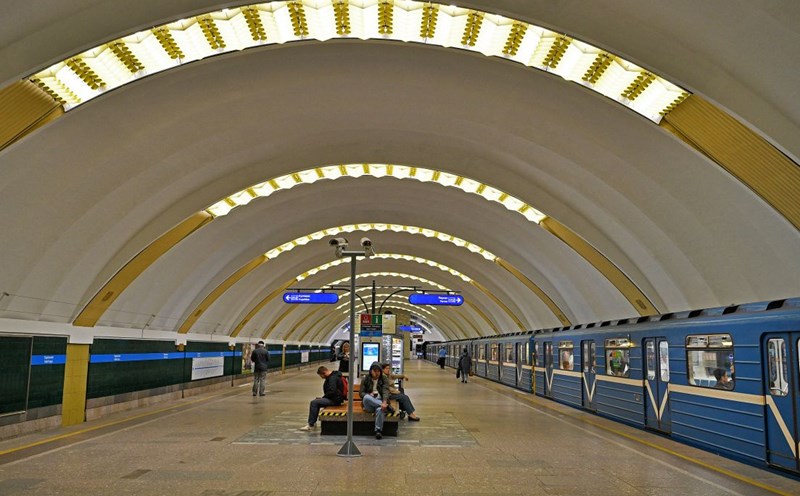Super real beauty in Pontic clouds
If the walls could speak, Sumela would certainly be a quiet storyteller, silently witnessing the changes of humanity.
In the 4th century AD, Christian followers established this monastery. This place witnessed the rise and decline of the Roman, Byzantine, Ottoman governments, and the Turkish independence struggle in the 20th century. But what makes visitors more surprised than the length of history, is the almost surreal location, challenging the importance of Sumela ancient monastery.
Located on the steep cliff of the Pontic mountain range, the entire complex of monuments, inner courts, libraries, bell towers, water access roads... were built at an altitude of nearly 300 meters from the deep blue valley below. From afar, Sumela Monastery is like a miracle of nature in the hands of humans.
Every day, thousands of pilgrims and tourists follow the winding stone-paved road, looking at the gray walls hidden in the clouds. Some come here to pray, others simply to witness the project that is considered a "monastery hanging in the sky" - a place that has been included in the UNESCO List of World Heritage Sites.
Currently, Sumela monastery operates as a national museum, no longer a place for religious activities. Over the years, the Turkish government has carried out many meticulous and elaborate restorations to preserve and ensure the safety of visitors.
Due to the risk of rockfall, we have hired professional climbers to attach steel nets and fences to the cliff to protect the project and visitors, said Levent Alniak, a museum and historical site manager for Trabzon province.
During the restoration process, many unexpected discoveries were revealed: A secret tunnel leading to a monk's house, perhaps previously used as an observation station. Inside, archaeologists found brilliant murals depicting paradise and hell, life and death.
The journey between legend and history
The sophisticated murals at Sumela ancient monastery are being restored with meticulous and skillful techniques by artists. In the dry summer, visitors can see them working, meticulously painting on graffiti and damage caused by time.
Many people write their names on the walls, and we have to restore each color piece to try to restore the works original look, restoring the work, Senol Aktas, said while working on the painting of the Lady delegates chatting to the Angels, a work from the 18th century.
Behind the facade of the church is a world hidden in a large cave, with paintings from the 13th century that are still vivid: Portraits of Jesus and Lady Maria on the stone ceiling, surrounding walls decorated with engels, documents, and Saints. A rather strange detail: Many lower paintings have somewhat drumstied eyes.
Many people consider it an act of sabotage, but tour guide Oznur Doksoz, who has been attached to the monastery since the 1980s, shared another explanation: Muslims in this area consider Mother Maria a sacred god. They often scrap the painting lightly, taking the paint scraps and mixing them with drinking water, believing that they would be blessed. No one knows if it is real or not, but that story is still being spread by the people".
The origin of Sumela ancient monastery is probably a blend of history and legend. According to legend, in 386 AD, the two Greek monks Barnabas and Sophronios found a portrait of the Mother Mother Maria in a cave in the middle of Pontic mountain, turning it into a stone church - originally Sumela monastery, and gradually, through the Byzantine and Ottoman dynasties, it became the largest pilgrimage center in the Black Sea.
Notably, despite the Islamic empire, the Ottoman people have a significant respect for Sumela Monastery. Under the Sultan Ottoman - the powerful Hoi giao kings - monasteries were still considered sacred and had special protection, instead of destruction as many people still thought, said Mr. Alniak. That has helped the project survive for more than 1,600 years, despite war and time.
After World War I, along with the collapse of the Ottoman Dynasty, Greek monks had to leave Turkey and the monastery was abandoned for a long time, becoming a destination for those seeking treasure. In the 1970s, the Turkish government began restoring Sumela as a part of the national cultural heritage.
Now, Sumela is not only a pilgrimage destination but also a place for visitors to seek the ancient and quiet beauty, to listen to the echoes of history. The ancient monastery is now located in altindere Valley National Park, about an hour's drive from the coastal city of Trabzon. The road leading to the monastery is winding, paved with stone, and bent between the pine forest and the sound of the stream. Sometimes, the clouds fall low, obscuring the entire stone steps, making people feel like they are walking between two worlds - one of humans, the other of myth. The monastery is open all day, but no one comes here just to "see a relic".
Because when standing in front of a giant cliff, looking at the monastery hanging in the sky, visitors feel like time is slowing down - and at that moment, Sumela Monastery is not only a heritage, but a gentle reminder of faith, steadfastness and eternal beauty created by human hands in the heart of Pontic mountains and forests.











